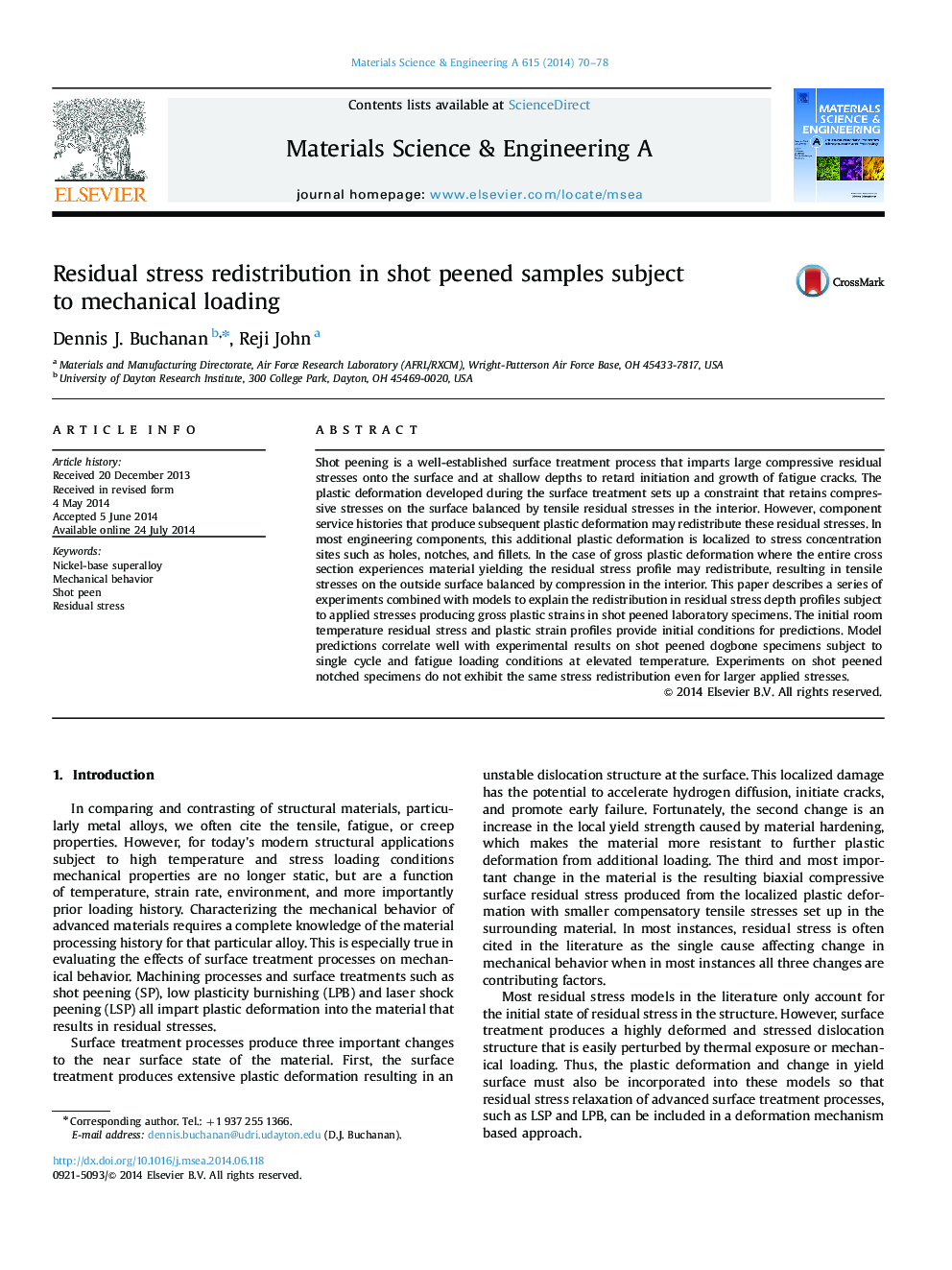| Article ID | Journal | Published Year | Pages | File Type |
|---|---|---|---|---|
| 7979926 | Materials Science and Engineering: A | 2014 | 9 Pages |
Abstract
Shot peening is a well-established surface treatment process that imparts large compressive residual stresses onto the surface and at shallow depths to retard initiation and growth of fatigue cracks. The plastic deformation developed during the surface treatment sets up a constraint that retains compressive stresses on the surface balanced by tensile residual stresses in the interior. However, component service histories that produce subsequent plastic deformation may redistribute these residual stresses. In most engineering components, this additional plastic deformation is localized to stress concentration sites such as holes, notches, and fillets. In the case of gross plastic deformation where the entire cross section experiences material yielding the residual stress profile may redistribute, resulting in tensile stresses on the outside surface balanced by compression in the interior. This paper describes a series of experiments combined with models to explain the redistribution in residual stress depth profiles subject to applied stresses producing gross plastic strains in shot peened laboratory specimens. The initial room temperature residual stress and plastic strain profiles provide initial conditions for predictions. Model predictions correlate well with experimental results on shot peened dogbone specimens subject to single cycle and fatigue loading conditions at elevated temperature. Experiments on shot peened notched specimens do not exhibit the same stress redistribution even for larger applied stresses.
Related Topics
Physical Sciences and Engineering
Materials Science
Materials Science (General)
Authors
Dennis J. Buchanan, Reji John,
